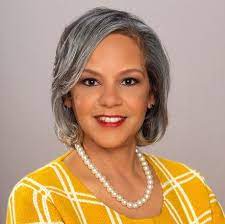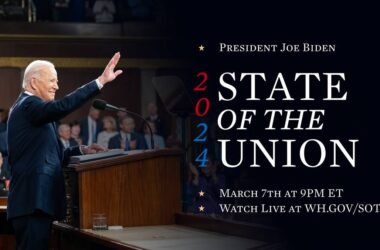Washington, DC–(ENEWSPF)–July 8, 2013 – 11:52 A.M. EDT
THE PRESIDENT: Thank you. (Applause.) Thank you very much. Everybody, please have a seat. Well, thank you so much.
Back in 2007, when I was first running for this office, I had the opportunity to visit Google headquarters in Mountain View, in Silicon Valley, to discuss ways we could use technology to allow more citizens to participate in their democracy, and bring a government built largely in the 20th century into the 21st century.
After all, we had already set out to build a new type of campaign — one that used technology to bring people together, and then trusted them with that technology to organize on their own. And the idea was simple: Instead of bringing more people to the campaign, we wanted to bring the campaign to more people, and let them determine its course and its nature. If you wanted to make phone calls or knock on doors, you didn’t have to come into a field office first, you could just get the information you needed right on your phone and go out there and do it. If you wanted to get your friends involved, then we had the tools to help you connect.
And I very much felt that some of the things that we were doing to help us get elected could also be used once we were elected. If you wanted to share your story, we could help you get your story out. And throughout this process, we created one of the most inclusive and one of the most successful campaigns in American history.
Now, once we got to Washington, instead of an operation humming with the latest technology, I had to fight really hard just to keep my BlackBerry. (Laughter.) And as anyone knows, dealing with the federal government is not always high-technology and it’s not always user-friendly.
So over the past four and a half years, we’ve worked diligently to change that. Just like we did on that campaign, we started by recruiting some of the smartest people from the private sector to work side-by-side with some of the smartest people in the public sector to help get it done. So that day that I visited Google, I promised to appoint the nation’s first CTO — Chief Technology Officer. And soon after I took office, I did. Today, our Chief Technology Officer, Todd Park, and our Chief Information Officer, Steve VanRoekel, are working with their teams to innovate and apply the best technology to help solve some of our biggest challenges — from creating jobs to reducing health care costs to keeping our nation secure.
We are the first to confess that progress has not always come quick, and major challenges still remain. But we’ve made huge swaths of your government more efficient and more transparent, and more accountable than ever before. And we’ve done it by focusing on three areas.
First, we found ways to deliver the services that citizens expect in smarter, faster, and better ways. So, for example, until recently, when a natural disaster struck, teams from FEMA had to rely exclusively on in-person inspections to figure out which families needed help. Now they analyze satellite and aerial imagery and get housing assistance to areas that need it most, more quickly. After Hurricane Sandy, most folks were able to sign up for assistance using FEMA’s mobile and web apps — updating and checking the status of their applications. And FEMA agents went door-to-door in some areas with iPads, helping residents who had lost power and Internet access sign up for disaster relief without leaving their homes. So making sure that we’re delivering services better, faster, more efficiently.
Second, we’ve identified new ways to reduce waste and save taxpayers money. So, for example, just by working to get rid of overlapping IT systems, we’ve identified more than $2.5 billion in savings across the federal government — and that’s just the beginning. I’ve proposed and signed into law the elimination of dozens of federal programs and cut even more that were either duplicative, not working, or no longer needed, saving billions of dollars a year. And the basic principle is simple: Taxpayers deserve the biggest bang for their buck, especially at a time when budgets are tight and we’ve got to do a lot more with less. And now anyone can visit WhiteHouse.gov to see your “Taxpayer Receipt.” It’s a literal receipt that tells you just how and where your tax dollars are being spent.
Finally, for the first time in history, we’ve opened up huge amounts of government data to the American people, and put it on the Internet for free. At Data.gov, you can search through and download more than 75,000 data sets — data on everything from what different hospitals charge for different procedures, to credit card complaints, to weather and climate measurements. And what’s happening is entrepreneurs and business owners are now using that data — the people’s data –to create jobs and solve problems that government can’t solve by itself or can’t do as efficiently.
So there’s a company called Opower, for example, that’s used open government data on general energy trends and weather to help families save more than $300 million on their energy bills. There’s another company called iTriage — founded by two emergency room doctors — that is using freely downloadable data about health care providers from the Department of Health and Human Services to help more than 9 million people find the closest doctors and hospitals that meet their needs. And the list goes on. And these companies have now hired hundreds of people and they’re still hiring. And millions of people have already used these applications that were created as a consequence of releasing this data.
So we’ve made some good progress on all fronts, but now we need to do more. So today, I met with all my Cabinet, including a number of new Cabinet members, some of whom have extraordinary private sector experience, and I directed the Cabinet to develop an aggressive management agenda for my second term that delivers a smarter, more innovative, and more accountable government for its citizens. And we’re going to continue to adopt good ideas from the private sector.
I’ve asked Sylvia Mathews Burwell, the Director of the Office of Management and Budget, to lead this effort. And Sylvia was part of a team at OMB that presided over three years of budget surpluses in the 1990s. After philanthropic work at the Gates Foundation and the Wal-Mart Foundation, she’s come back to help us move this effort forward.
She’s not the only one. We’ve also welcomed a new class of Presidential Innovation Fellows — and I’d love for the press to meet some of these folks, because they’re extraordinary. These are Americans with vast private sector technology expertise who have volunteered to come serve their country in the private [public] sector. So, for example, Scott Wu helped found a company that helps recent graduates turn their good ideas into good businesses. And Claire Holroyd used to manage product design for everything from mobile phones to video games. Garren Givens founded an innovative shopping site that adapts to your tastes as you browse. And so they and 40 other Fellows are taking this private sector expertise and bringing it into the government — making it smarter, making it more user-friendly.
Today, for example, many online shopping websites help fill in some of your information so you don’t have to enter it every time you log in. As a consequence, we’re working on a project called MyUSA that will save you time by doing the same thing with government forms. And if you’re applying for federal benefits, we think you should be able to track the status of your application in real time, just like you can follow location of a package all the way to your doorstep. These are things that are in the pipeline right now.
Currently, when our government asks for bids on a project, it’s usually written in complicated language with complicated requirements that most people don’t understand. We’re working to make things simpler so it’s easier for more small businesses across the country to bid on projects. And we’ll help businesses create more jobs doing work that needs to be done — and by opening up more competition to government contracts, we’ll save taxpayers money in the process.
We recently re-launched an upgraded, easier HealthCare.gov. Beginning October 1st, Americans will be able to log on and comparison shop an array of private health insurance plans, side-by-side — just like you go online and compare the best deal on cars or the best deal on computers. Because you’ll finally be part of a new pool with millions of other Americans, insurers will actually want to compete for your business. And we’ve worked really hard to make these marketplaces user-friendly. So, for example, when the prototype of an application to join the marketplace came in at 21 pages, we rejected it. We said let’s do better. It’s now three pages long. And, by the way, that’s a lot shorter than the application you have to fill out for private insurance currently.
Last year, I also asked Congress for the authority to reorganize and consolidate the federal bureaucracy. We’re doing a lot of this work administratively, but unfortunately there are still a bunch of rules, a lot of legislation that has poorly designed some of our agencies and forces folks to engage in bureaucratic jump-hoop — hoop jumping instead of just going ahead and focusing on mission and delivering good service to our citizens. So what we’ve asked is let’s clean this up. Let’s consolidate it.
Almost every President from Herbert Hoover to Ronald Reagan had this authority to redesign the federal government, the executive branch, to deliver services better — just like every business owner seeking to make sure that his or her company keep pace with the times. Currently, we do not have that capacity. And so I’m going to keep on doing what we can administratively, but we sure could use Congress’s help, particularly at a time when Congress is saying they want more efficient government — they give a lot of lip service to it — and we’re operating under severe fiscal constraints.
It makes sense for us to be able to redesign government so that it can deliver on the functions that the American people are looking for. We should all want a government that’s smarter, quicker, and more responsive to the needs of the American people.
Now, the good news is America is full of talented, dedicated public servants who are working really hard every day to uphold the public trust. And those of us who believe that government has a responsibility to guarantee some level of basic security, and to make sure everybody gets a fair shot at success — from the entrepreneur who wants to start a business, to the workers who will work in that business — we also have a responsibility to make sure that government works. And that’s why I’m glad that we’ve got people like Scott and Claire and Garren and so many other talented, idealistic men and women who have signed up to help us tackle these challenges. That’s why we’re so proud that Sylvia is going to be heading this up.
And I’m going to be asking more people around the country — more inventors and entrepreneurs and visionaries — to sign up to serve. We’ve got to have the brightest minds to help solve our biggest challenges. And it’s a reminder that in this democracy, we the people recognize that this government belongs to us, and it’s up to each of us and every one of us to make it work better. We can’t just stand on the sidelines. We can’t take comfort in just being cynical. We all have a stake in government success — because the government is us.
And we’re doing things right when we’re tracking weather more effectively — that saves lives for folks who are in the path of a tornado. When we’re delivering effectively data on improved health care choices, that’s going to save lives and reduce costs. And we’ve got the potential to do so much better than we’re doing right now, but we’re going to need the help of the private sector, the non-for-profits. Most of all, we want to make sure that we’re empowering some of the folks who are sitting here today to make sure that they can deliver on the kind of 21st century government the American people want.
So thank you very much, everybody. Keep up the good work. (Applause.)
12:07 P.M. EDT
Source: whitehouse.gov








